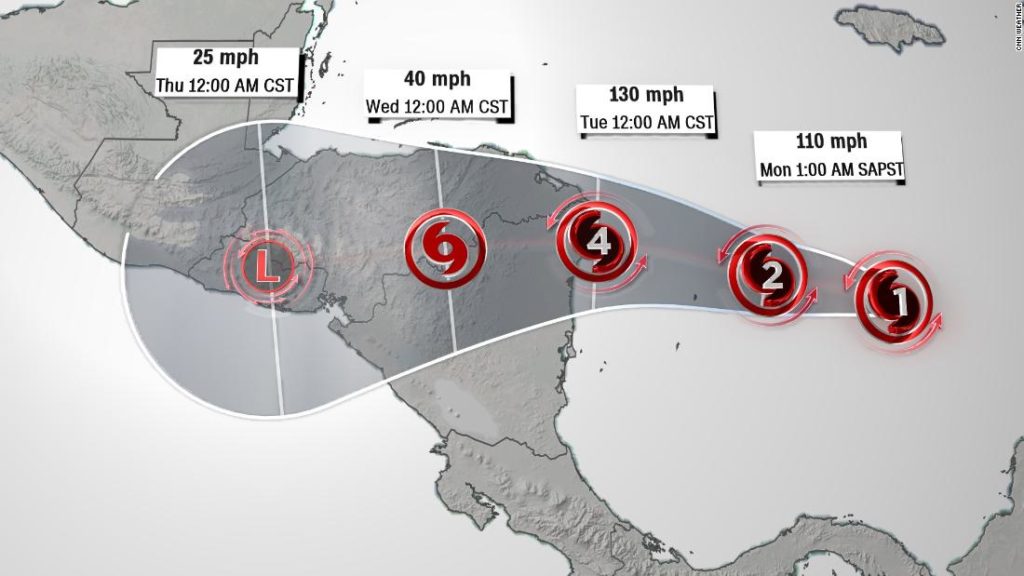“Rapid strengthening is expected during the next 24 hours, and Iota is forecast to be an extremely dangerous category 4 hurricane when it approaches Central America tonight,” the NHC advisory said.
Iota is forecast to have a dangerous storm surge of 10 to 15 feet, life-threatening rainfall of 1 to 2 feet, “potentially catastrophic winds” as well as “extreme rainfall” as it comes ashore, the NHC advisory said.
A hurricane warning is in effect for Providencia, the coast of Nicaragua from the Honduras/Nicaragua border to Sandy Bay Sirpi, as well as the coast of Honduras from Punta Patuca to the Nicaragua border, according to NHC.
The storm is forecast to pass near or over Providencia Island Monday bringing hurricane conditions as it takes aim at the Nicaraguan and Honduran coasts.
Hurricane watches and tropical storm warnings are also in effect for surrounding areas.
“Preparations to protect life and property should be rushed to completion,” the advisory said.
Heavy rains could bring flooding and landslides
Once the storm makes landfall it is expected to to move westward and southwestward through Central America.
Rainfall accumulations throughout the region are expected to be high, with Honduras, northern Nicaragua, Guatemala, southern Belize seeing between eight and sixteen inches and isolated accumulations of 20-30 inches possible in northeast Nicaragua and northern Honduras, according to the advisory.
Costa Rica an Panama should also see about four to eight inches, with totals of 12 inches possible in some areas.
Such high rainfall amounts will “lead to significant, life-threatening flash flooding and river flooding, along with mudslides in areas of higher terrain,” the advisory warned.
The predicted storm surge along the coasts of Nicarague and Honduras will be accompanied by “large and destructive waves,” along with swells that cause “life-threatening surf and rip current conditions,” according to the NHC.
Swells will be felt from Central America to the Yucatan Peninsula, as far east as Jamaica and south the Colombia.
Central America still recovering from Eta
More than 3.6 million people across Central America have been affected by the storm to varying degrees, the Red Cross said earlier this week.
While the full extent of the damage from Eta won’t be known for a while, the powerful storm, combined with the coronavirus pandemic, may have impacts that last for years.
The storm hovered for days over Nicaragua, Honduras and Guatemala, with heavy rains creating flooding and landslides that wiped entire communities off the map.
Dozens of people in the remote Guatemalan village of San Cristobal remain missing after a landslide swept through last week, leaving mud 50 feet deep in some places.
CNN’s Robert Shackelford and Gene Norman contributed to this report.
You may also like
-
UK coronavirus variant has been reported in 86 countries, WHO says
-
NASA technology can help save whale sharks says Australian marine biologist and ECOCEAN founder, Brad Norman
-
California Twentynine Palms: Explosives are missing from the nation’s largest Marine Corps base and an investigation is underway
-
Trump unhappy with his impeachment attorney’s performance, sources say
-
Lunar New Year 2021: Ushering in the Year of the Ox

